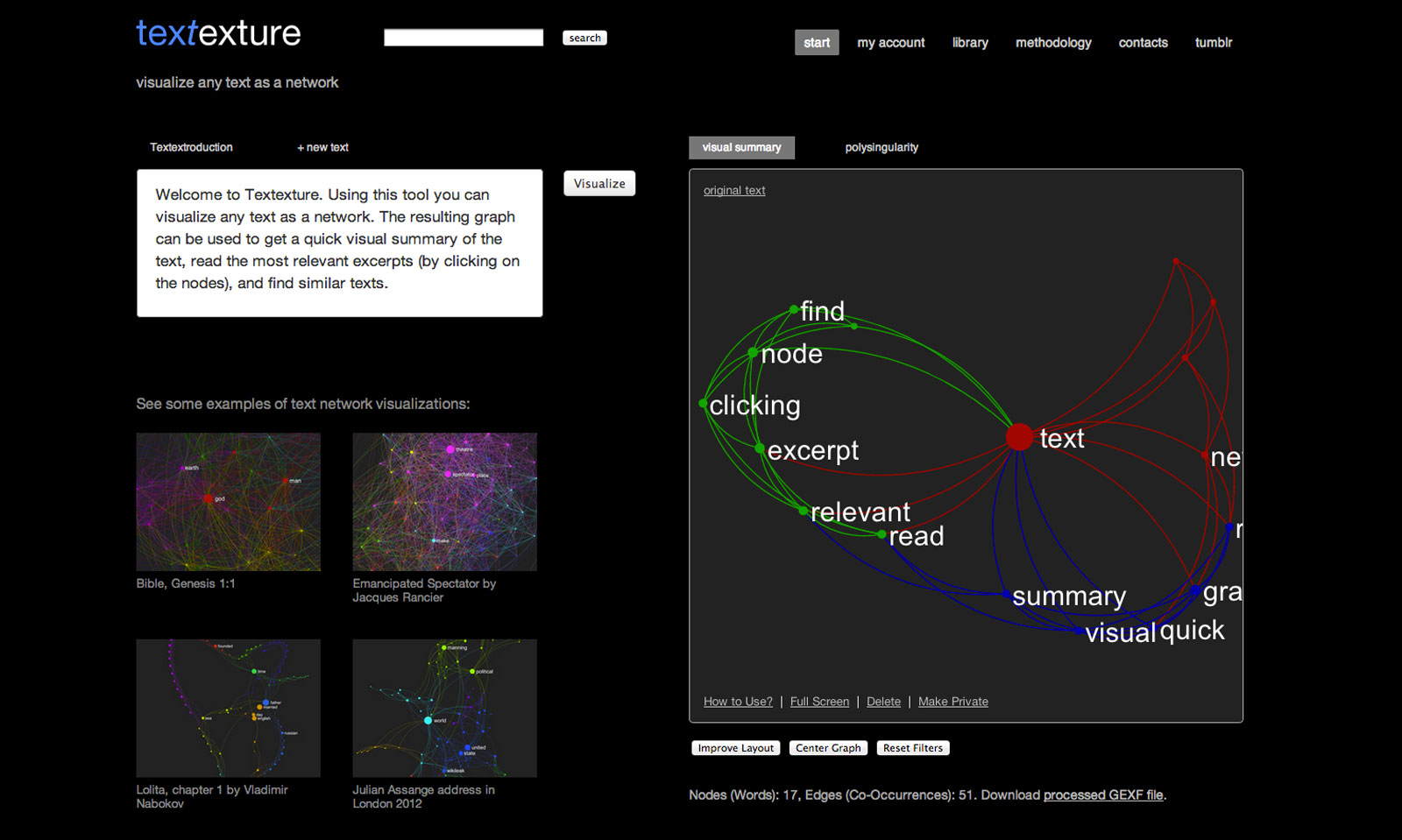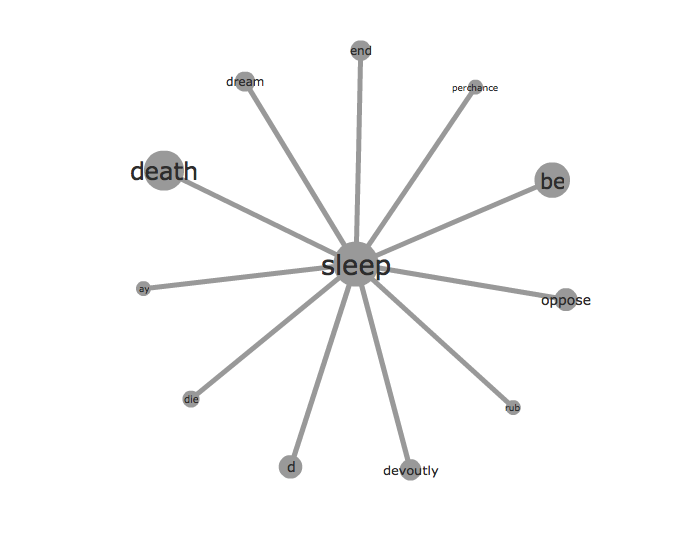Posted by Nodus Labs | November 5, 2012
Textexture: The Non-Linear Reading Machine
When we read a text, we normally follow it in quite a linear fashion: from left to right, from top to bottom. Even when we skim articles quickly online, the trajectory is still the same. However, this is not the most efficient method of reading: in the age of hypertext we tend to create our own narratives using the bits and pieces from different sources. This is an easy task with short Tweets or Facebook posts, but it becomes much more difficult when we’re dealing with newspaper articles, books, scientific papers. The amount of information we’re exposed to increases from day to day, so there’s a challenge of finding the new tools, which would enable us to deal with this overload.
As a response to this challenge we at Nodus Labs developed a new free online software tool Textexture.Com, which visualizes any text as a network and enables the user to use this interactive visualization to read through the text in a non-linear fashion. Using the network one can see the most relevant topics inside the text organized as distinctively colored clusters of nodes, their relationship to one another, and the most influential words inside the text, responsible for topic shifts. This way the user can navigate right into the topic of the text that is the most relevant to them and use the bigger (more influential) nodes to shift into another subject.



